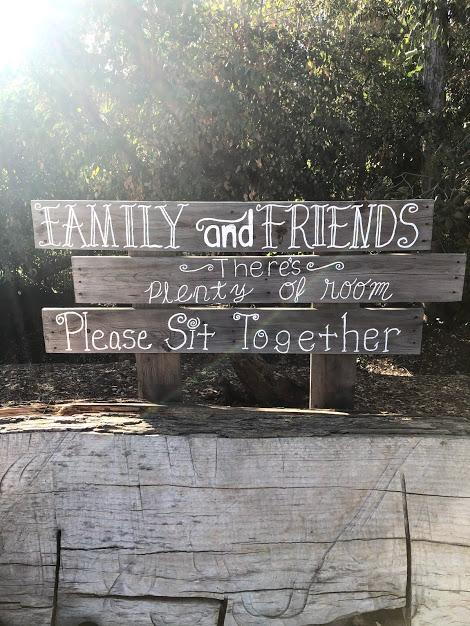Stay tuned… Christine will post content related to grief process, anxiety management, communication and more. If interested in a specific topic, please contact her with your suggestions.
let's talk - how communication styles turn people on or off
posted: Feb. 24, 2021.

There is a myriad of information out there on communication patterns or styles. While internet data is often helpful, the sheer volume of material available at times can bog us down without yielding anything useful. Below I highlight five communication styles I notice are often used:
- Direct
- Indirect
- Progressive
- Story-telling
- Debate
These styles are not in competition with each other, rather, they each have their legitimate uses (and abuses). While we may favor one style in a work setting, we may favor another style entirely when talking amongst friends or family. We might switch seamlessly between two or more of these styles within the same conversation based on changing content. The purpose here is to showcase these different styles and explore their benefits and drawbacks. If you recognize these styles being used by another person, you’ll be better equipped to understand how to respond to the speaker.

Going for the jugular –
the Direct approach
Some people don’t beat around the bush when they talk about an issue or topic. These communicators appreciate clear, specific messages that leave no room for imagination or fill-in-the-blank. They are comfortable with tackling a subject head-on and don’t like flowery language, euphemisms, or coy language. Get to the point and make it quick.
The strength of this style is in its ability to succinctly convey the sender’s ideas. The listener is presented with information quickly. This is fantastic one-way communication or in situations that require clear directives – like emergencies or other time-sensitive conditions.
The downside of direct communication is that it can sound formal or commanding in its presentation. That doesn’t lend itself to relationship development as it’s a “top-down” style that assumes the sender is in a managerial role. Whoever is speaking manages the discussion and controls the direction of communication. Of course, during an exchange, speaker-listener roles can trade off. If all the participants in a given conversation are direct communicators, the dialogue among them can feel satisfying and productive.
However the satisfaction level goes down dramatically if one or more of the participants do not prefer this method of communication. Conflicts and misunderstandings within relationship roles frequently arise as the direct style of talking can sound bossy or controlling to others who don’t prefer this method. If this isn’t your preferred style but it is your partner’s, be mindful that unnecessary details are unwelcome. Peripheral data that cloud the point are irritating to direct communicators. They want relevant content only.
GPS is set to the scenic route – Indirect communication style
Some topics require a more diplomatic approach to present various ideas. Sensitive subjects often need a more genteel manner to avoid embarrassing the participants. In some cultures, indirect communication is regularly used to save face or preserve the dignity of the person who might need correcting or guidance. In these cases, coming right out with the message can be offensive and induce shame in the hearer. Indirect communicators are aware that direct messages can breech relational trust and cause conflicts.
Using indirect communication can be a gentle way of making your needs known without putting the other person on blast. However, indirect communication relies on subtle social cues to get its message across. Problems arise when there are differences in presuppositions between speaker and listener. While the speaker’s hints seem obvious to them, the listener may not catch the intent and respond to something else entirely. This causes frustration and prolongs the communication process. If the listener isn’t primed to what the speaker is referring to, more energy is spent on getting to the bottom of the communication. If your partner is an indirect communicator, you may have to draw out the point if you’re unclear of their intent.
Going on the journey – Progressive approach
The progressive style is one that seeks to build a bridge between what the speaker wants and what the listener is willing to do in response to the message. Supporting data for the speaker’s case is presented before the main point. The assumption is the listener is more likely to buy in and comply if the listener understands the reasons behind the speaker’s request. This is a collaborative approach to communication that seeks to develop ownership for all the participants. The message is delivered in stages to allow for the listener to go on the journey with the speaker. Embedded in this approach is opportunity for emotional intimacy as the listener is invited to join the speaker’s viewpoint.
Response is voluntary in the progressive approach so follow through on requests made may not occur. The added time it takes to explain reasons behind the communication lengthens the exchange. For some, they may lose patience waiting for the speaker to get to the point. There is no guarantee that the listener will agree to the speaker’s requests even if they go on the journey together. If your partner is a progressive communicator, you’ll have to extend patience as they build up to their main point.
Once upon a time – Story-telling
Some people just love conversation or relaying an experience without a specific point to their discourse. This is the heart of the story-telling style. The topic may seem inane to the listener or an example of “shooting the breeze.” There isn’t a request in the communication other than the willingness on the part of the listener to allow the speaker to monologue. This type of communication may be applicable when the speaker needs space to process a specific event or even traumatic memory. It often sounds like mental wandering and the listener’s only job is to go on the ride with the speaker.
Story-telling can be interesting for the listener, but it is often one-sided. The speaker has center stage and the listener is regulated to the role of audience. This style doesn’t lend itself well to actual conversation but it can yield information the listener finds interesting. If you find yourself captive to a story-teller and you need a way out, a polite interruption can break the rhythm. Be mindful that story-tellers often are unaware when their lengthy discourse exhausts their listener.
Point, counter-point – the Debate style
Verbal sparing is the tell-tale signs of the debate style of communicating. This is a very active, back-and-forth style where the speaker-listener constantly exchange ideas, supporting data and arguments. For some, the goal of this communication style is to win the argument. For others, the goal is simply the banter of differing opinions. Engagement means everyone voices their ideas, allows others to critique those ideas, and are willing to entertain new insights in the process of debate. The debate style can be very stimulating and energizing. It can also be draining when discussing topics that have no clear resolution.
In some cases, debaters are forceful in their delivery style and can turn off their listeners. They may be less interested in true debate of ideas and more intent on persuasion. If this is the case, the listener is viewed as a potential convert to the speaker’s views. This can cause conflict and disruption in the relationship if the listener is not willing to agree with the speaker’s arguments. If you find yourself in a conversation with someone using this style of communication and need a way out, a gracious exit may include silence while the speaker finishes making their case. If the speaker seems ready to go on endlessly, then a more direct, “Oh, look at the time!” interruption may be in order.
Healthy communication improves relationship
Regardless of the style used, healthy communication will result in improved relationship among those conversing. If you leave a conversation feeling satisfied then the style used is less important. However, if you leave feeling confused, disconnected or otherwise unsure of how you feel towards the others present, then chances are there was a clash of communication styles. You can review the interaction and ask yourself if you notice what turned you off. If someone used a communication style you didn’t like, then you could adjust your expectations for next time or plan for ways to steer things in a different direction. It might mean you limit exposure to the offending party. If the relationship warrants an honest conversation about how you felt, then it’s worth it to brooch the subject of different styles and how to navigate a better outcome in the future.
Christine Lister, LMFT helps others negotiate different communication styles effectively. Contact her for more information.
